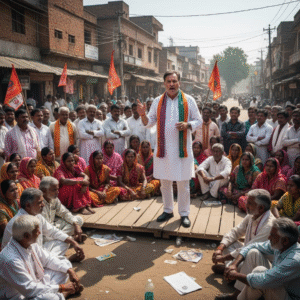Ahmedabad, Gujarat —
It was 1:38 in the afternoon. Some were prepping for clinical rounds, others half-asleep, heads tucked into books and white coats. They had no idea they’d be written into a crash report — not as passengers, but as bystanders crushed by a Boeing Dreamliner.
Flight AI171, bound for London, didn’t just fall from the sky — it collided head-on with Block D of a medical college hostel located less than 600 meters from the airport’s perimeter wall.
🛏️ The Hostel That Became Ground Zero
The aircraft crashed into the Sardar Vallabhbhai Patel Institute of Medical Sciences hostel, where over 80 medical students lived. According to Ahmedabad Municipal Health Authority, at least 28 residents — mostly final-year MBBS students — were either killed instantly or suffered fatal burns when the left wing and fuel tank ruptured against the building.
“It felt like an earthquake followed by a fireball… The corridor lit up before we knew what we were running from.”
— R, a surviving hostel resident, speaking under anonymity
Eyewitnesses outside say the aircraft nose-dived and blasted through the third and fourth floors, setting off multiple secondary explosions from ruptured electrical lines and gas cylinders used in the pantry kitchen nearby.
🪑 The Flight That Felt Wrong, Even Before It Flew
Before it was fire, the aircraft was fatigue. A few hours before the final takeoff, a traveler named Akash Vatsa posted a video that now haunts digital timelines:
Air conditioning wasn’t functioning. Cabin screens were black. Service buttons gave no response.
He said it felt like “sitting inside a dying machine” — and that’s exactly what it turned out to be.
🧍♂️ One Man Survived — And Walked Away Through Smoke
Vishwash Kumar Ramesh, seated in 11A, is the sole surviving passenger. His proximity to the emergency exit — and possibly sheer instinct — allowed him to jump or be ejected seconds before the explosion. He was found limping barefoot near a shattered compound wall, calling his brother’s name. His brother, seated a few rows away, perished.
“I remember heat. And then nothing. I just ran.”
— Vishwash Kumar Ramesh, via hospital trauma note
🎧 The Experience Wasn’t Technical. It Was Tactile.
This wasn’t a crash you needed a flight manual to fear.
It was felt — by passengers sweating in dead air.
It was seen — by hostel residents who thought it was thunder.
It was heard — in the hollow silence of a Boeing that didn’t want to breathe.
📌 What the Experience Reveals
What Was Observed
Why It Now Matters
Cabin lights & screens dead
May indicate pre-crash electrical failure
Exit-row seat survival
Exit placement became the only physical lifeline
Aircraft dropped onto populated zone
Raises urgent questions about flight path risk zones
Hostel casualties
Highlights neglected risk of airport-adjacent buildings
🕯️ The Line Between Life and Loss Was Just a Wall
In the story of AI171, those in the air and those on the ground shared the same fate — they simply didn’t know they were all on the same trajectory.
For the students inside the hostel, it wasn’t a journey. It was an interruption. Of futures, of friendships, of everything.
And as the investigation stretches into black box data, insurance claims, and international technicalities, the human experience will remain untallied — not in reports, but in the dreams that burned between floor tiles and fuselage.











